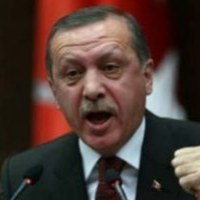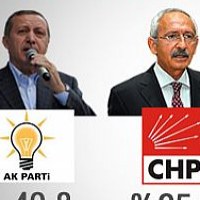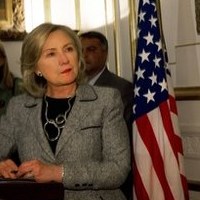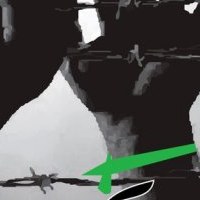![]()
Wed, June 29, 2011 | Middle East Quarterly, Summer 2011, Volume XVIII: Number 3, pp. 11-17 | by Bruce Maddy-Weitzman

On January 14, 2011, Tunisia's long-reigning president Zine al-Abidine Ben Ali (right, with French president Nicolas Sarkozy) bowed to public pressure and fled the country to a comfortable exile in Saudi Arabia.
Middle Eastern Upheavals: Tunisia’s Morning After
This article was first published in the Middle East Quarterly, a publication by the Middle East Forum (www.meforum.org).
Where does Tunisia, the unlikely igniter of the Middle Eastern upheavals, stand on the democratic transition scale three months after the overthrow of the long reigning autocrat Zine al-Abidine Ben Ali? And can the country, which stood (mostly by choice) at the margins of Arab political life since achieving independence in 1956, serve as a democratizing exemplar for other Arab states?
Blazing the Democratic Path
The answer to the second question seems fairly clear. As early as 1991, Samuel Huntington identified what he termed one of the most important global political developments of the late twentieth century — a third wave of democratization among thirty previously nondemocratic states.[1] There was no Arab state on his list, yet he identified Tunisia as a prime candidate for future democratization owing to its pace of economic growth, educated middle class, and concurrent liberalization measures undertaken by the country’s new president, Ben Ali.
In the end, however, it was the self-immolation of a struggling 26-year-old vegetable seller in a dusty, provincial Tunisian town on December 17, 2010,[2] rather than Ben Ali’s fleeting political reforms, that ignited a steadily rising tsunami of popular protests, which cascaded across the Middle East and North Africa. Still Huntington’s prognosis was, on the whole, on target. For notwithstanding its own long history of bureaucratic-oligarchic rule, Tunisia enjoys a unique mix of factors, not much present elsewhere in the region, that increase its chances for a relatively successful democratization. These factors include:
1. a compact, well-defined national entity with a particular history as an open Mediterranean trading country, and thus a strong collective sense of self;
2. a modernization process that produced a substantial, educated middle class, the highest rate of female literacy and lowest rate of population growth in the Arab world, and a systematic effort to raise the status of women, including the banning of polygamy (no other Arab country has dared to explicitly do so, as it contradicts the Qur’an);
3. a tradition of active civil society, particularly labor unions and the bar association; and
4. a small-sized, non-politicized military, whose chief of staff, Rachid Ammar, pointedly refused Ben Ali’s directive to fire on protestors, instead acting to control policemen, security and intelligence personnel, and affiliated thugs. He also turned aside any suggestion that he and his fellow officers, and not civilians, assume control of the country.[3]
All this, of course, by no means ensures that Tunisia’s democratizing experiment will succeed, for there are any number of countervailing factors and likely obstacles ahead. Tunisians have been quick to point, for instance, to the violent actions of provocateurs, carried out by members of the security services of the old regime or under their instruction. Although these accusations could not always be substantiated, they did seem to make sense at times: Indeed, Huntington identified this as a common threat to newly democratizing regimes. Nonetheless, Tunisia’s possibilities for success remain considerable, and developments since Ben Ali’s overthrow do not suggest otherwise.
Political, Institutional, and Constitutional Transition
In comparison to Egypt, Tunisia maintained a greater degree of constitutional legitimacy and continuity during the fashioning of a new order. Upon Ben Ali’s departure, the speaker of the chamber of deputies, 77-year-old Foued Mebazaa, assumed the role of interim president in line with article 57 of the Tunisian constitution. The sitting prime minister, 71-year-old Mohamed Ghannouchi, a former finance minister and World Bank official, remained in his post until his forced resignation on February 27; he was succeeded by 84-year-old Beji Caid Essebsi,[4] who had held a number of senior cabinet posts in the governments of Ben Ali’s predecessor, Habib Bourguiba, but not those of Ben Ali. All three men belonged to the Tunisian political elite that had ruled the country since independence, raising the question, still not yet definitively answered, as to whether Tunisia is on a path in which the leader is sacrificed to the public protests while the ruling political-economic-security elites successfully scramble to preserve their positions.
Indeed, this question was very much on the mind of Tunisians. The initial Ghannouchi national unity government included members of opposition parties, and even a blogger, Slim Amamou, who had been imprisoned during the protests.[5] Yet it was deemed top heavy with former regime figures in key positions. As a result, Tunis continued to witness large scale popular protests, creating a good deal of tension between those who feared that their revolution was going to be hijacked and those who understood the economic, social, and security consequences of further disorder. For instance, 11,000 prisoners had escaped or been released in the chaotic last days of Ben Ali’s rule,[6] and at least some had returned to a life of crime, creating serious concerns over personal safety, particularly in the evenings. Over the following month, the authorities undertook a number of measures designed to demonstrate their seriousness of intent and placate the protestors, including the removal of some Ben Ali stalwarts from the cabinet, suspending the activities of the former ruling party, the Rassemblement constitutionnel démocratique (RCD) in advance of its banning, arresting a number of key political and business associates of Ben Ali, and seizing financial and real estate assets squirreled away by members of Ben Ali’s entourage.[7] However, the atmosphere after one month’s time was anything but calm with numerous wage strikes, demonstrations, and sit-ins by unemployed miners and others threatening to paralyze the country. One response came in the first week of March when thousands demonstrated in favor of a return to normalcy, albeit without abandoning the revolution’s goals, and the number and scale of protests declined significantly after that.
This was not, however, a simple victory for the advocates of order. The calming of the atmosphere was due in no small part to the largest protest since Ben Ali’s overthrow — a 100,000-strong demonstration on February 25 in the center of Tunis demanding the resignation of Prime Minister Ghannouchi.[8] The scene in front of the Ministry of the Interior, the symbol of Ben Ali’s heavy handed rule, was chaotic, resulting in running street battles between police and protestors. Five persons were killed in clashes with the police the following day. At this point, Ghannouchi bowed to the pressure and resigned, albeit bitter about what he called a media conspiracy, which underreported his government’s actions and silenced his supporters, even on Facebook.[9] But the specter of chaos receded. For now, Tunisia had stepped away from the edge.
Ghannouchi’s replacement, Essebsi, quickly pledged fidelity to the revolution’s aims. His new cabinet included no holdovers from the Ben Ali era, and within one week’s time, he announced the abolition of the hated secret police.[10] More important was the scheduling of an election on July 24, 2011, to choose a constituent assembly that will be charged with rewriting the constitution, preparing a new electoral law and legislation regarding press independence, and deciding on the country’s future political system.[11] Presumably, the intention is to establish a parliamentary democracy with clear limitations on presidential powers. The sequence was the reverse of what was decided in Egypt where presidential and parliamentary elections will be held in September under the existing, albeit amended, constitution, a method that most analysts of democratic transitions view as more problematic and less likely to ensure a successful outcome.
But how could the Tunisian authorities’ commitment to real democratization be ensured? Decades of authoritarian rule had emasculated political parties and civic associations as well as ensuring an economic sector heavily dependent on state patronage and favors.
Still, Ben Ali’s toppling gave the country’s dormant political arena an electric shock. No less than twenty-eight parties and organizations of varying political persuasions had already called in February for the establishment of the National Council for the Protection of the Revolution.
The Ghannouchi government responded swiftly and favorably by establishing the High Commission for the Realization of Revolutionary Goals, Political Reforms, and Democratic Transition. On March 17, the commission, made up of 12 parties, 42 national figures, and 17 civil society and national organizations, convened its first session. Its declared mission was to examine laws related to political organization and to propose specific reforms in keeping with the demands of the revolution. It was also expected to observe the conduct of the interim government and to draft legislation regarding the July 24 constituent assembly election. The meeting itself was contentious, with complaints being voiced over the exclusion of many of the forces that had taken part in the revolution.[12]
In another display of the authorities’ responsiveness to criticism, the council’s membership was nearly doubled to 130 in order to strengthen the representation of parties, youth, women, regions, and independent figures, constituting an additional marker of the newly emerging balance between state and civil society.
Meanwhile, Tunisians marveled at their new-found freedoms, relishing the chance to openly discuss and debate the desired next steps. Print and electronic media were transformed overnight into lively and contentious platforms. One American analyst familiar with the Tunisian scene wrote that “the whole country seems involved in a massive group therapy session — and loving it.”[13] Bloggers, such as “A Tunisian Girl,” who had played important roles during the uprising and had been targeted by the security forces, became minor celebrities while continuing to warn against complacency and expressing skepticism. Blogger Zied Abidi declared, “I don’t see any political parties that are capable of presenting leaders who enjoy the trust of the people … I don’t either see figures capable of charting my future or the future of next generations.” Blogger Houssam sarcastically lambasted the criticism emanating from the elites advocating a return to order:
The enemies of revolution, they say, are those who want everything; the enemies of revolution are those who want things to proceed in an ideal way; the enemies of revolution are those who are endangering the country’s economy. … Let’s call a spade a spade, and let’s highlight the causes of diseases. The enemies of revolution are the [former ruling party] RCD. It’s true that the RCD is temporarily suspended, and its dissolution is only a matter of time [the final judicial confirmation of its dissolution came on March 28], but its cancerous cells are spread everywhere.[14]
The Economy
Two additional factors that will most certainly be crucial in shaping Tunisia’s political evolution are the economy and the newly legalized Islamist current: The stronger the economy, the less the likelihood that Islamists can win large scale support, and vice versa.
The Tunisian economy, as a former U.S. State Department official observed, “was in good shape from a macroeconomic perspective. Inflation was low; the central bank had three months’ currency reserves; budget deficits as a percentage of GDP [gross domestic product] were within acceptable levels, and the economy had been growing at an annual rate of 5 percent or higher.”[15] At the same time, it suffered from a number of structural problems, including an overreliance on agriculture, the weakness of the private sector, an unfavorable international environment, and, as a result, chronically high rates of unemployment, especially among the young.[16]
By mid-March, Western governments had seen the need to provide economic backing. On a March 17 visit, U.S. secretary of state Hillary Clinton brought a U.S. endorsement for Tunisia’s political and economic reforms, including pledges that a conference of donor states would be held in a few months’ time, that Washington legislators would be asked to create a fund for Tunisian-American projects, and that economic partnerships between U.S. businesses and young entrepreneurs would be forged.[17] On March 23, the U.S.’s Middle East Partner Initiative allocated $20 million dollars, one third of its total budget, to promoting the democratic transition. The European Union, alarmed by the thousands of Tunisians who had fled the country on boats to neighboring Italian islands, pledged a similar amount. Near the end of the month, the U.S. embassy in Tunis hosted a trade and investment mission, which included representatives of ten American companies from a variety of sectors, and was led by Suresh Kumar, assistant secretary of commerce.[18]
On April 1, Tunisia’s finance minister Jalloul Ayed provided a clear picture of the challenges ahead. Growth in 2011 had originally been forecast for 5.4 percent with the Ben Ali government’s budget designed to create 80,000 new jobs. Now, however, the forecast was for between zero and 1 percent growth with foreign investment declining by one billion Tunisian dinars ($720 million). Only 40,000 jobs would be created, he said, split evenly between the private and public sectors, and $4 billion were required in loans for 2011.[19]
Political Islam
Tunisia’s Islamist movement emerged in the late 1980s. As elsewhere, it came partly as a response to socioeconomic dislocations stemming from the complex processes of modernization and development. In addition, Tunisia’s authoritarian system under Habib Bourguiba provided no political channels for activity. Most importantly, according to one scholar, was the “psychosocial alienation” from the predominant, Western, liberal model of modernity that left Tunisian youth feeling rejected and marginalized, and thus “in the market for an ideology that could reaffirm both their economic and cultural self-worth.”[20]
In Ben Ali’s initial, brief liberalization phase, he permitted Islamists to run in the 1989 elections as independents. Officially, they captured around 14 percent of the vote, coming close to winning a majority in several urban areas, and their real strength was thought to have been more than double the official tally. Alarmed, and with next-door Algeria ripping itself apart following its own sudden liberalization and complete legalization of the Islamist movement, Ben Ali quickly shifted course, banning the newly formed Islamist al-Nahda (Renaissance) Party. Taking advantage of some Islamists’ violent acts, he imprisoned thousands of activists. Party leader Rashid al-Ghannushi fled to a London exile.[21]
On January 30, two weeks after Ben Ali’s departure, Ghannushi returned to Tunis, welcomed at the airport by thousands of jubilant supporters. Also present was a small contingent of women’s rights activists, concerned with preserving Tunisia’s secular underpinnings and with emphasizing the equal rights of women. That their concern was shared by many was indicated by a march of thousands in central Tunis in mid-February calling for a separation of mosque and state. The march came in the wake of the murder of a Polish priest and an attack on a brothel. “Nothing is irreversible,” said Khadija Cherif, a former head of the Tunisian Association of Democratic Women, a feminist organization. “We don’t want to let down our guard.”[22]
On the spectrum of Islamist thinker-activists, Ghannushi generally comes out on the side of dialogue, multiparty democracy, and nonviolence, promoting a modernist-Islamist synthesis, what the Tunisian-born political scientist Larbi Sadiki terms “soft Islamism.”[23] In an interview with al-Jazeera after returning to Tunis, Ghannushi spoke of the ruling Turkish Justice and Development Party as the party closest to al-Nahda’s outlook. On the matter of head scarves, he told al-Jazeera: “We have continuously defended the right of women and men to choose their own lifestyle, and we are against the imposition of the headscarf in the name of Islam, and we are against the banning of the headscarf in the name of secularism or modernity.”[24] But he has also justified the murder of secular, anti-Islamist intellectuals in Algeria and Egypt, and used standard anti-Semitic motifs in condemning Israel and Zionism, including its alleged promotion of Western hostility toward Islam.[25]
Ghannushi’s approach to the coming phase was clearly cautious. He favored a national unity government for the time being, expressed no intention to run for president, and suggested that it was time for a younger generation of Islamist activists to take the lead. While expressing confidence with al-Nahda’s popularity among the public, party officials had no way of knowing its extent. Nor did al-Nahda have a monopoly in the Islamist arena. Its cofounder, Abdel Fattah Morou, had been imprisoned in the 1990s while Ghannushi was in exile and, since that time, had taken a more conciliatory approach to the regime than his colleague. Though present at the airport to welcome Ghannushi, he subsequently made it clear that he had differences with al-Nahda and was preparing to form a new party.[26] There is also a new Islamist party, Justice and Development, headed by a former army officer imprisoned in the 1990s for plotting a coup.[27]
Along with many other parties, al-Nahda was legalized in early March.[28] By contrast, the radical, pan-Islamic Hizb al-Tahrir was banned. It had organized a hostile demonstration in front of Tunisia’s main synagogue, an event widely viewed on YouTube. One prominent lawyer and human rights activist claimed that she clearly identified a number of former regime provocateurs in the crowd.[29] The incident was highly embarrassing to the authorities, and the Ministry of Religious Affairs quickly condemned it, as did the center-left, ex-communist Ettajdid Party.[30]
Conclusion
The focus of regional and international attention on the Arab upheavals has long since shifted from Tunisia to other hot spots, from the civil war in neighboring Libya — where Tunisia has been providing aid to refugees and injured Libyans and would very much like to see Qaddafi fall — to teetering Yemen, Bahrain, Egypt, and, most recently, Syria. This lack of attention suits Tunisians just fine. It also indicates that, however tortured the path to greater political pluralism, rule of law, and the necessary degree of comity among competing social forces and political movements, Tunisia has made substantive progress in the first months of its new era. Whether or not the country’s elites will demonstrate the wisdom and leadership necessary to manage the transition — perhaps the key factor in determining the success of a democratizing transition according to Huntington — remains to be seen.
Bruce Maddy-Weitzman is the Marcia Israel Senior Research Fellow at the Moshe Dayan Center for Middle Eastern and African Studies at Tel Aviv University. The author thanks Jonathan Kahan for his assistance in collecting material for this article.
Notes:
[1] Samuel Huntington, The Third Wave: Democratization in the Late Twentieth Century (Norman, Okla. and London: Oklahoma University Press, 1991).
[2] Reuters, Jan. 20, 2011; The Sunday Times (London), Jan. 23, 2011.
[3] The New York Times, Jan. 24, 2011.
[4] Asia One News (Singapore), Feb. 28, 2011; The Washington Times, Mar. 7, 2011.
[5] The Guardian (London), Jan. 18, 2011.
[6] The New York Times, Jan. 26, 2011.
[7] The Telegraph (London), Jan. 19, 2011.
[8] The Guardian, Feb. 27, 2011.
[9] La Presse de Tunisie, Feb. 28, 2011.
[10] The New York Post, Mar. 8, 2011.
[11] Associated Press, Mar. 3, 2011; Reuters, Mar. 3, 2011.
[12] Magharebia.com (United States Africa Command), Mar. 22, 2011.
[13] J. Scott Carpenter, “Help Tunisia First,” Foreign Policy, Feb. 24, 2011.
[14] Magharebia.com, Feb. 13, 2011.
[15] Carpenter, “Help Tunisia First.”
[16] Paul Rivlin, Arab Economies in the Twenty-First Century (Cambridge: Cambridge University Press, 2009), pp. 266-86.
[17] Radio France International, Mar. 17, 2011.
[18] “Trade Mission Recap,” U.S. Embassy, Tunis, Mar. 31, 2011.
[19] Reuters, Apr. 2, 2011.
[20] Susan Waltz, “Islamist Appeal in Tunisia,” Middle East Journal, Autumn 1986, pp. 665-70.
[21] Today’s Zaman (Istanbul), Feb. 23, 2011.
[22] The New York Times, Feb. 20, 2011.
[23] Larbi Sadiki, “BA 2886: The Return of Ghannouchi,” al-Jazeera TV (Doha), Jan. 30, 2011.
[24] Al-Jazeera TV, Feb. 7, 2011.
[25] Martin Kramer, “A U.S. Visa for an Islamic Extremist?” Policywatch, no. 121, The Washington Institute for Near East Policy, Washington, D.C., June 29, 1994.
[26] Asharq al-Awsat (London), Mar. 11, 2011.
[27] Ibid., Mar. 10, 2011.
[28] Al-Jazeera TV, Mar. 1, 2011.
[29] Jeune Afrique (Paris), Jan. 29, 2011.
[30] Agence France-Presse, Feb. 18, 2011.



 RSS
RSS










Tunisia’s Morning After | Middle East news, articles, opinion and analysis | CrethiPlethi.com http://fb.me/11YJ4ZVa3
Tunisia’s Morning After | Middle East news, articles, opinion and analysis | CrethiPlethi.com http://fb.me/11YJ4ZVa3
Tunisia’s Morning After | Middle East news, articles, opinion and analysis | CrethiPlethi.com http://fb.me/11YJ4ZVa3